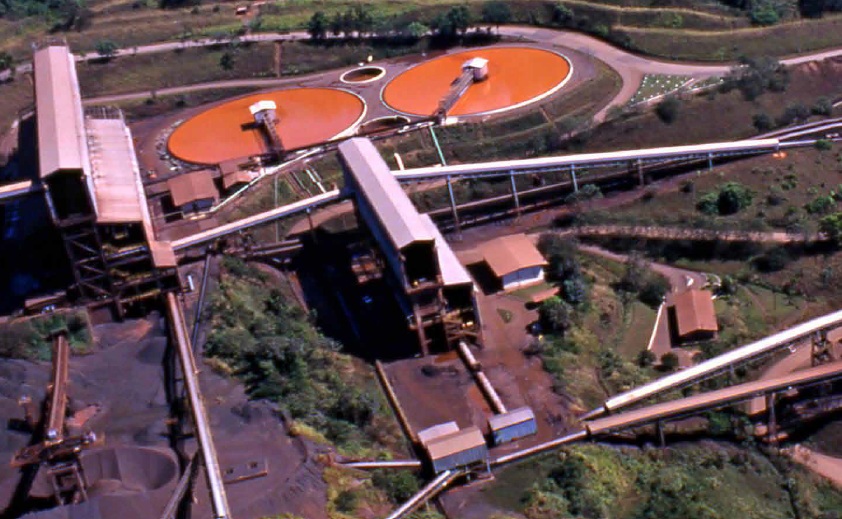
The most widely used of all minerals, iron accounts for approximately 95 percent of the world’s metal production in terms of weight. As the world’s third largest iron ore producer and exporter, Brazil has long reaped the financial benefits provided by one of its largest export products.
The Carajás region of the country boasts some of the richest reserves and concentrations of iron ore anywhere on the planet, with the Carajás Mine, located in the state of Pará in Northern Brazil, holding the distinction of being the world’s largest iron ore mine. Fully owned by Vale, the mine holds up to 7.2 billion metric tonnes of iron ore in proven and probable reserves.
The Carajás Mineral Province was originally discovered entirely by accident when a US Steel helicopter was forced to land on a hill in the area to refuel in 1967, with the first iron ore mine called N4E Mine coming into operation in 1985. In the mine’s first year output reached one million metric tonnes of iron ore, which was processed at a semi-industrial plant. During the second year an industrial-scale processing plant was brought online and this resulted in production rising to 13.5 million metric tonnes of final product.
Mining operations in Carajás are open-pit, with 15-meter-high benches. The off-highway trucks that Vale uses, each capable of carrying loads of over 240 metric tonnes, unload ore at crushing facilities located inside the mines. After this, the material is transported on conveyor belts for further processing.
At this stage, the ore is crushed once more and classified using screens, cyclones and spiral classifiers. The end result is three classes of products, these being sinter feed, pellet feed and lump ore. Now spanning five simultaneous open-pit mine operations, the Carajás Mining Complex produces approximately 300,000 metric tonnes of iron ore per day and was responsible for producing a record 109.8 million metric tonnes in 2011, an increase of 8.5 percent on the year before.
With its mines located inside the 400,000 hectare Carajás National Forest, Vale’s operations understandably have come under environmental scrutiny. Operations at the Carajás iron mines conform to an environmental quality management system that has been implemented, and is certified, to ISO 9000 and ISO 14001 standards and procedures.
Vale’s activities in Carajás include an extensive programme to restore vegetation on former mining sites using species that are native to Carajás National Forest. Meanwhile, the company also maintains a well-structured environmental monitoring network that systematically evaluates aspects such as air quality, noise pollution, vibrations and water quality.
In partnership with the Chico Mendes Institute for Biodiversity Conservation (ICMBio), Vale contributes to managing Carajás National Forest and the development of research, thereby expanding overall knowledge of the region’s biodiversity. Just as importantly, this partnership also enables work to occur that monitors and fights forest fires.
Vale is also proud to be in partnership with not only ICMBio, but Brazil’s environment regulator, Ibama, as well in their work to help conserve an area of forest that spans around 1.2 million hectares, three times the size of the Carajás National Forest and ten times the size of the state capital of Pará.
One of the more recent developments involving the mine is the Carajás S11D iron project. The project represents an expansion in iron ore mining and processing at the Carajás Mining Complex. Continuously, since it first began operations back in 1985, the complex has produced the best quality iron ore in the world, which has been supplied to both the domestic and international markets. Similarly during that time Vale’s presence in the municipalities of Parauapebas and Canaã dos Carajás in southeast Pará has underpinned a strong cycle of economic and social development in Brazil’s North region.
The Carajás S11D iron project has a key role to play in a new cycle of sustainable development in the states of Pará and Maranhão, and in the continuation of Brazil’s position as a major player in the global iron ore market. S11D will ultimately produce 90 million metric tonnes of iron ore per year, meaning that upon reaching full capacity, Vale’s total ore production in Pará will have reached approximately 230 million metric tonnes per year.
This ore will help meet the growing global demand for iron that is being generated by rising investment in construction and in the production of machinery, equipment, aircraft, mobile phones and other essential everyday products that are central to our way of life. Together with the other projects that are planned to come on-stream in the region, the new mine will help place southeast Pará on the same level as the iron quadrangle region in the state of Minas Gerais.
As Vale looks to the future of its Carajás iron ore mine activities, it is abundantly clear that the S11D project is at the heart of its plans and ambitions. The S11D project, named after its location, ore body S11, block D, is easily one of the most exciting developments occurring anywhere in South America. The mining potential of ore body S11 equates to ten billion metric tonnes of iron ore, while block D alone contains 2.78 billion metric tonnes of reserves that will be mined by Vale. It is believed that this project alone will enable Vale to maintain its leading position in the global iron ore market for many years to come.
Written by Will Daynes, research by Abi Abagun



 ValeBrazil-Americas.Mining-Feb13-Bro-s.pdf
ValeBrazil-Americas.Mining-Feb13-Bro-s.pdf









